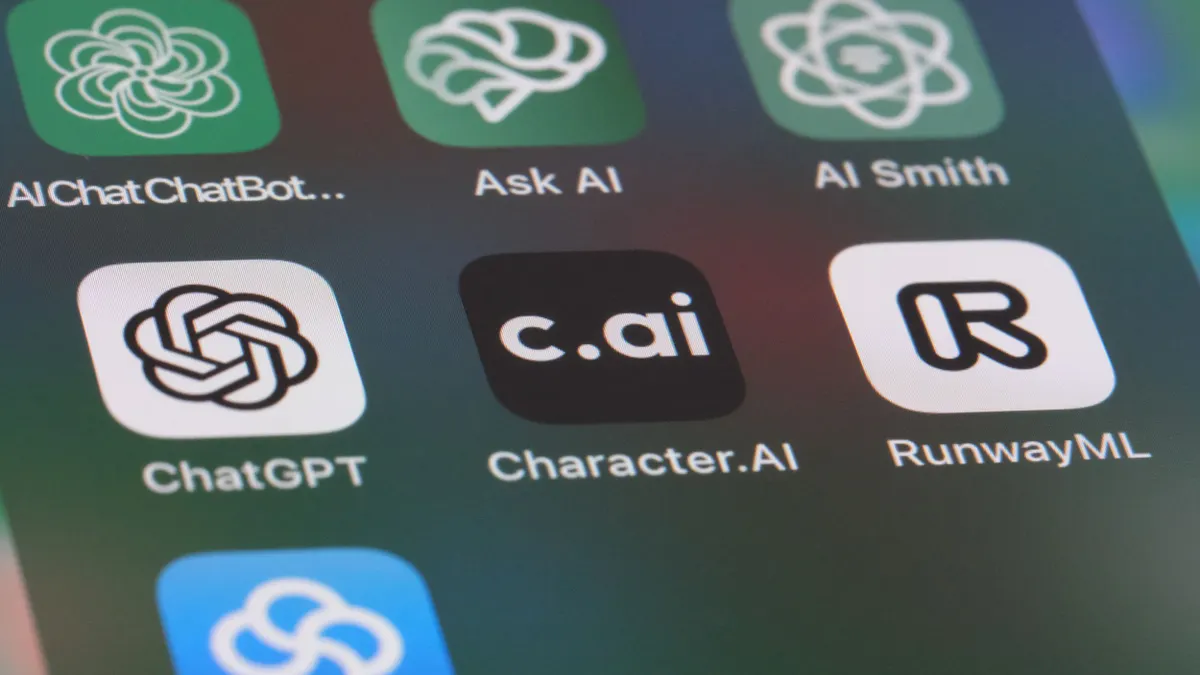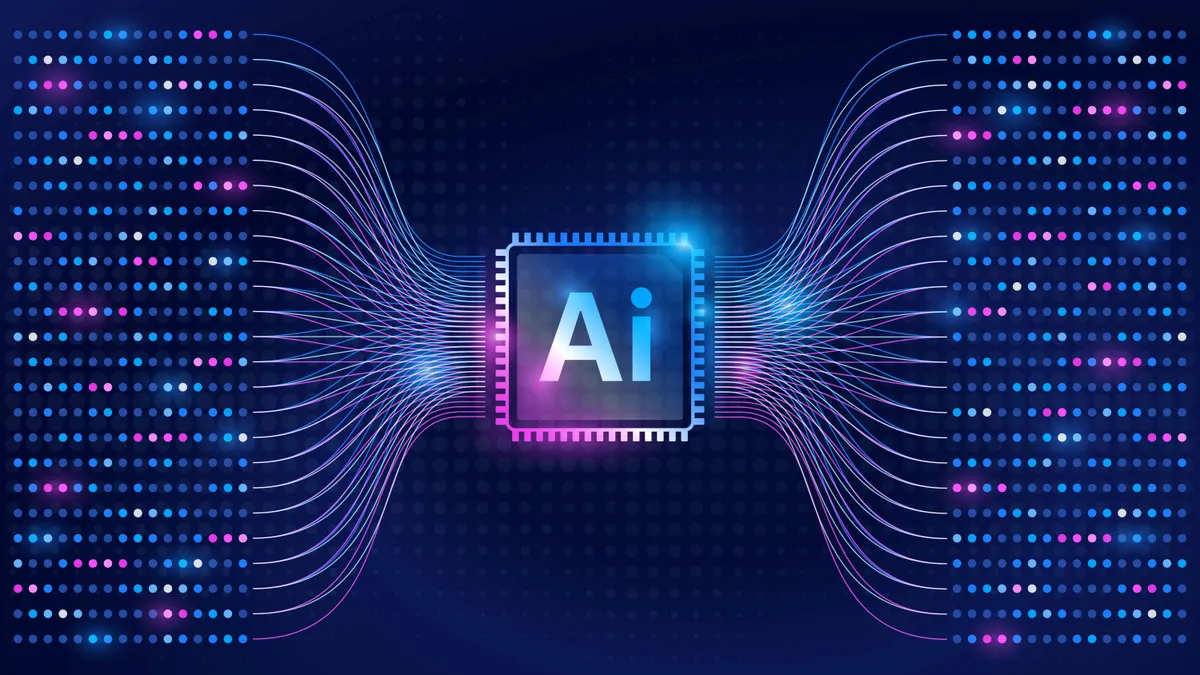Editor's note: Mary Mesaglio is a distinguished research vice president at Gartner, Inc., and will discuss similar topics at Americas Gartner IT Symposium/Xpo, taking place virtually October 18-21. Keep an eye out for CIO Dive's coverage from the event.
Cast your minds back to the end of 2020, when colleagues and friends were singing the tune of "if we can just get through this year, all will be well."
We're well over halfway through 2021 and know that the opposite is true – things are still not well.
Depending on where you are in the world, you may still be in lockdown or experiencing the effects of the coronavirus Delta variant. There is still the same lack of punctuation in our lives, milestones are still not being celebrated and post-work happy hours are still absent – and we're all pretty tired as a result.
Yet the pandemic is not the only crisis we're experiencing in 2021 that is compounding this exhaustion. In fact, we're arguably trying to live and work amidst four global leadership crises:
- Health crisis: This not only accounts for the global COVID-19 pandemic, but also the ensuing mental health epidemic that is sweeping the globe. Suddenly, managers, teammates and colleagues are being asked to weigh in on the early signs of depression among their teams. IT leaders have had to become clinical psychologists, which is likely not something they were trained for.
- Economic crisis: The crisis and its attendant recovery are asymmetrical. Economic volatility will continue and manifest among teams in such a way that causes worry about things such as job security and finance. This also weighs people down over time.
- Social justice crisis: Conversations about diversity, equity and social justice that rarely used to take place in the workplace are now front and center. Again, they take a different form depending on where you are in the world, but they can be sticky and are shifting the expectations of leaders and their organizations as a result.
- Climate crisis: Companies are being asked about what they're doing in the name of sustainability by investors, customers, new talent, existing employees and beyond, while workers worldwide are facing the anxiety of an uncertain climate future. Gartner survey data shows that CIOs serve as enablers in their organization's sustainability initiatives.
Taken together, these crises are disrupting all business plans and triggering enterprises to review their purpose. This, in turn, increases symptoms of fatigue among employees, and the IT organization is certainly not immune.
As these crises unfold, businesses are facing intense pressure to digitally accelerate – boards of directors are investing more in digital than in other areas as a result of the pandemic. There is high visibility around the need to digitally accelerate, except the very symptoms of fatigue that IT organizations are experiencing are the exact opposite of what's required to be successful at it.
So, how can IT organizations bring their best game and successfully tackle their digital agendas when everyone is experiencing crisis fatigue?
Consciously communicate the 'why'
Digital transformations require 180-degree shifts in behavior, and IT leaders need to be convincing and superlative in their communications in order to get their teams to jump onboard. Give people a clear, mission-based "why" that motivates them beyond the fatigue they're feeling.
Most "why's" for transformation and change are filled with corporate jargon and are ambiguous. Example: We are transforming into a digital first organization ready to tackle the challenges of the 21st century with our ecosystems of partners to deliver agile, customer-centric services and innovations.
No one knows what that means. Instead, be intentional and communicate in a way that resonates and motivates your team. Example: We differentiate by offering an excellent quality of service that is based on completeness (full service, start to end processes), reliability (visibility and predictability) and efficiency (no idle time) at a competitive price.
The intention behind a digital transformation should have a longer life span than anything else.
Relentlessly prioritize
When organizations digitally accelerate, multiple dependencies – both internal and external – are present. Gartner research shows that as the list of dependencies grows during on the ongoing pandemic, the ability to prioritize does not come as easy to leaders.
Because of the unprecedented nature of this crisis, IT leadership is throwing everything in the kitchen sink to get it done. Humans are not equipped to thrive in this approach forever.
When delegating work, remember that the most important fatigue fighter is a sense of progress and completion.
Think of the pleasure you get from physically crossing something off of your to-do list. CIOs must delegate in small, manageable chunks – or tasks that can be completed in a day or a week – rather than try to tackle everything at once.
Prioritization and organization adds order to the chaos that would otherwise be trying to digitally accelerate when everyone is already so tired.
Leverage negative visualization
Resilience might be an overused word since the onset of these crises, but it's still very relevant as organizations tackle the second half of 2021. Resilience is not the absence of obstacles but the ability to plan to overcome them, increasing teams' sense of agency in the long run and giving them a break from possible project risks.
IT leaders would benefit from exploring all the things that might go wrong with a given deployment or transformation — ahead of time and in a safe environment. Gartner calls this negative visualization.
This type of "pre-mortem" strengthens resilience and gives leaders the ability to prepare a response. After all, decision making and responding to risk on the fly is significantly impaired when someone is fatigued.
Here's a real example: A chief digital officer (CDO) at a large energy company was leading a digital transformation effort and wanted to review her approach with her larger team. Rather than putting the onus on her direct reports to point out any possible flaws in her approach on their own and worry about appearing disloyal, she conducted a pre-mortem to define failure in advance.
The pre-mortem enabled the team to explore what might go wrong, safely and constructively, without inducing panic and even more exhaustion. The CDO left her rank at the door and asked the entire team, "It is 12 months in the future and our project has failed spectacularly. What went wrong?"
Since the question was being asked in a visceral, hypothetical way, participants were more willing to surface qualms, questions and obstacles that might not have come to the forefront otherwise – often those associated with people and relationships.
It's important for CIOs to understand the effects of fatigue and how to combat them as the crises mentioned don't have any clear end in sight, nor does the focus on digital acceleration.



















